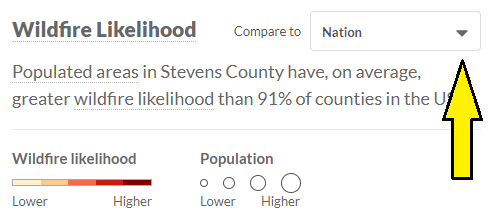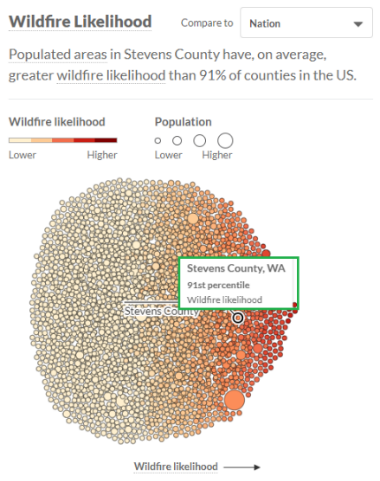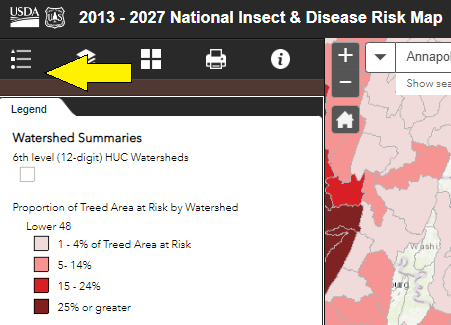Form FS-1500-0049 Wood Products Infrastructure Assistance Application
Infrastructure Investment and Jobs Act Financial Assistance to Facilities that Purchase and Process Byproducts for Ecosystem Restoration (CFDA 10.725) Wood Products Infrastructure Assistance (WPIA)
R2 FS-1500-0049 WPIA Application 10-21-2022
Infrastructure Investment and Jobs Act Financial Assistance to Facilities that Purchase and Process Byproducts for Ecosystem Restoration (CFDA 10.725) Wood Products Infrastructure Assistance (WPIA)
OMB: 0596-0254
FS-1500-0049
OMB: 0596-NEW
Expires: XXXXXX
Infrastructure Investment and Jobs Act Financial Assistance to Facilities that Purchase and Process Byproducts for Ecosystem Restoration (CFDA 10.725)
Wood Products Infrastructure Assistance (WPIA) FY2022 Application
Required Actions - Ensure that your organization is registered with the System for Award Management (SAM), which is located at https://sam.gov.
Cover Page for Part 1: Cooperator Contact Information
Project Title:
Project Length (Typically 2 -3 years up to a maximum of 5 years):
Legal Business Name of Applicant:
Project Facility Type (Check all that apply):
☐ Wood Processing Facility ☐ Wood-to-Energy Facility ☐ Sawmill
Select the 2022 North American Industry Classification System (NAICS) code that most closely describes the current or proposed project facility. (e.g., 321113 – Sawmills, 321999 Wood pellets manufacturing). NAICS Code:
Physical Location of the Current or Proposed Project Facility (Provide physical address, weblink from an online mapping service, or geographic coordinates):
Project Cost & Cooperator Funding
USDA Forest Service Funding Request:
Cooperator Funding1 (Amount of non-federal funds allocated to project):
Cooperator Funding as a Percentage of USDA Forest Service Funding Request (A÷B x 100):
Total Project Cost (A + B):
Contact Information
Financial Agreement Contact (Responsible official for the financial administration of the grant agreement)
Name: Title:
Organization/Company:
Street Address/P.O. Box:
City, State Zip:
Phone: E-mail Address:
Project Contact (Responsible for management/coordination of project) If listed above, check box ☐
Name: Title:
Organization/Company:
Street Address/P.O. Box:
City, State Zip:
Phone: E-mail Address:
Part 1: Project Questionnaire, Description of Project and Financial Plan, Budget Table and Justification, and Appendices
Project Questionnaire - Answer each question as accurately as possible.
|
||
☐ Establish a processing/manufacturing facility where previously no facility existed. ☐ Reopen a facility that was shut down or idled. ☐ Retrofit or convert an operational or idled facility. |
☐ Expand an operational or idled facility to increase wood or biomass utilization and or manufacturing capacity. ☐ Improve a facility to increase operational efficiencies and or reduce operational costs. ☐ Other purpose. |
|
|
||
☐ Development/engineering phase. ☐ Seeking non-federal financing to initiate construction. ☐ Currently under construction. ☐ Operating at full production capacity. |
☐ Operating at less than 50% capacity or idled. ☐ Not operating but will be at more than 50% capacity in less than 6 months. ☐ Permanently shut down. ☐ Other status. |
|
☐ Check this box if the project facility utilizes wood waste from other facilities and enter the percentage estimate of raw materials from the wood waste facility that originate from ecosystem restoration projects on federal or Indian lands. |
||
(b) Of this amount, identify the volumes and types of materials that originate from federal or Indian lands. |
||
|
||
(b) What is the furthest distance the byproducts travel to the project facility from the ecosystem restoration projects? |
||
(b) What is the furthest distance the byproducts travel to the project facility from the areas under contract? |
||
|
||
(b) If you have additional comments and sources on how this project will support disadvantaged communities, please add them here: |
||
|
||
|
||
|
||

What is the Wildfire Likelihood percentile for the County as compared to other counties in the U.S.? |
||
|
||
|
☐ 0% of Treed Area at Risk ☐ 1 - 4% ☐ 5- 14% ☐ 15 - 24% ☐ 25% or greater ☐ Could not be determined ☐ I have provided additional forest health information in the Appendix. |
|
Description of Project and Financial Plan (Address the following in the form beginning on page 4)
Describe the intended project activities and financial need of the project facility. Describe the planned project activities that will (1) Utilize meaningful volumes of byproducts from ecosystem restoration activities on federal lands or Tribal lands and/or (2) Improve manufacturing efficiencies to ensure continued operations at the project facility. In addition, describe how the financial assistance will play a role in creating long-term wood utilization that will support continued ecosystem restoration work on federal or Tribal lands. Identify the following:
What are the project goals and objectives?
How will the financial assistance be used to increase wood utilization capacity or manufacturing efficiencies at the project facility?
What is the anticipated impact of the financial assistance on the ability of federal or Tribal land managers to reduce wildfire risk or insect and disease infestation?
Identify how the project will assist in reducing the cost of conducting ecological restoration projects that generate byproducts such as logs and woody biomass.
B. Description of Project and Financial Plan (This field is limited to 5,000 characters and spaces)
Budget Tables and Justification
The Project Budget Table and Justification are required in Part 1 of the application. While no match is required, if applicant is using non-federal funds to support the project, identify these contributions in the Cooperator Funding Table. The budget tables should support the Description of Financial Need and mirror data entered in the required financial form SF–424A (Budget Information for Non-Construction Programs).
Instructions for the Project Budget Table:
Lines 1-8: Enter the dollar amount for each item.
Line 4: Only stationary equipment is eligible for Forest Service grant funds. The leasing of mobile equipment is allowed if the lease agreement is not lease-to-own. Indian Tribes seeking financial assistance will be allowed to use the Forest Service funding the purchasing of mobile equipment.
Line 9: Sum of Lines 1 through 8.
Line 10: Costs not directly attributable to accomplishing the project, such as overhead or indirect costs. Indirect costs are limited to 10% of total direct costs unless a federally negotiated indirect cost rate agreement (NICRA) has been established.
Line 11: Sum of Lines 9 and 10.
Line 12: Use the total in Line 11, Column III to determine the percentage of each share in Line 12, Columns I and II.
Project Budget Table
Categories |
I. Forest Service Funds |
II. Cooperator Funds (non-federal funds) |
III. Total |
1. Personnel |
|
|
|
2. Fringe benefits |
|
|
|
3. Travel |
|
|
|
4. Equipment |
|
|
|
5. Supplies/Materials |
|
|
|
6. Contractual (identify below) |
|
|
|
7. Construction |
N/A |
|
|
8. Other (identify below) |
|
|
|
9. Total Direct charges |
|
|
|
10. Indirect charges |
|
|
|
11. Total |
|
|
|
12. Percentage of Total (%) |
|
|
|
Note: Applicants should be aware that the purchase of stationary equipment (>$5,000) with Forest Service funds creates a federal interest in the equipment. Any proposed equipment is subject to the regulations at 2 CFR § 200.310, 200.313, and 200.316. These 2 CFR § 200 regulations are available at: www.ecfr.gov.
Budget Justification
Please provide specific details on how USDA Forest Service funding will be used for each of the following budget categories:
Budget Line 1. Personnel: This is the actual estimated salary cost paid and does not include fringe benefits. Show job titles or positions, estimated days or hours, and the estimated cost per day or hour. Costs must align with regulations listed in 2 CFR § 200.430. (This field is limited to 1,625 characters and spaces)
Budge Line 2. Fringe Benefits: Fringe is generally expressed as a percentage of the salary cost. Provide the rate and total estimated cost. (This field is limited to 1,625 characters and spaces)
Budget Line 3. Travel: Show anticipated trips, number of travelers, locations, and an estimated cost per trip. (This field is limited to 5,000 characters and spaces)
Budget Line 4. Equipment: Identify all equipment being funded. Provide documentation of equipment costs in Appendices. (This field is limited to 5,000 characters and spaces)
Budget Line 5. Supplies/Materials: Provide an estimate of the supplies and materials that may be purchased for the project. (This field is limited to 5,000 characters and spaces)
Budget Line 6. Contractual: List out any estimated costs with a description of work for each anticipated contract or subaward. (This field is limited to 5,000 characters and spaces)
Budget Line 7: Construction: Federal funds may not be used for construction; however, they may be included in the cooperator’s share. (This field is limited to 5,000 characters and spaces)
Budget Line 8. Other: Any costs under this category must be itemized with a description and an estimated cost. (This field is limited to 5,000 characters and spaces)
Cooperator Funding Table
If applicable, identify the value of cooperator contributions. Please value in-kind contributions and materials at reasonable and acceptable rates. Letters of support from partners specifying the amount of project contributions must be included in the Appendix of Part 1 of the application package.
Cooperator Name |
Cash |
Materials |
In-Kind Services |
Total |
|
|
|
|
|
|
|
|
|
|
|
|
|
|
|
|
|
|
|
|
|
|
|
|
|
|
|
|
|
|
Totals |
|
|
|
Appendices
The following items are required appendices of Part 1 and do not have page limitations or formatting requirements.
Resumes of project team members and highly relevant partners.
If applicable, a list of all other funds (federal, state, private) received, that are closely related to this financial request within the last 5 years (include agency, program name, and dollar amount).
A screen shot from SAM.gov showing either an active registration or that the registration process has been initiated in SAM.gov.
Letters of financial support specifying financial commitment of non-federal funding contributions (cash or in-kind) to the project.
Appendices should be well organized with an index so reviewers can readily find information of interest. Include only relevant information in the Appendices that will help the review panel understand and evaluate your project.
The following items are examples of optional appendices of Part 1 and do not have page limitations or formatting requirements.
Copies of current contracts for the removal, disposal, or purchase of wood products from federal, tribal, state, county, city, or private lands.
Cost quotes from equipment manufacturers or firms for items or services directly related to the financial request for assistance.
Feedstock supply studies.
Letters of support for the project from land management agencies, tribal governments, or private landowners.
Paperwork Reduction Act Notice
A Federal agency may not conduct or sponsor, and a person is not required to respond to, nor shall a person be subject to a penalty for failure to comply with an information collection subject to the requirements of the Paperwork Reduction Act of 1995 unless the information collection has a currently valid OMB Control Number. The approved OMB Control Number for this information collection is 0596-NEW. Without this approval, we could not conduct this survey/information collection. Public reporting for this information collection is estimated to be approximately 5.25/hours per response, including the time for reviewing instructions, searching existing data sources, gathering, and maintaining the data needed, and completing and reviewing the information collection. All responses to this information collection are voluntary; however, failure to provide this information could result in program benefits being withheld or denied. Send comments regarding this burden estimate or any other aspect of this information collection, including suggestions for reducing this burden to the U.S.D.A. Forest Service email address [email protected] and include the OMB Control Number in the subject line.
1 While a match is not required, cooperator funding is a project selection criterion. Applicants are more likely to be funded if at least 25% of the total project cost originates from non-federal dollars.
COVER PAGE: COOPERATOR CONTACT INFORMATION
| File Type | application/vnd.openxmlformats-officedocument.wordprocessingml.document |
| Author | Rappold, Patrick - FS |
| File Modified | 0000-00-00 |
| File Created | 2023-08-09 |
© 2025 OMB.report | Privacy Policy


